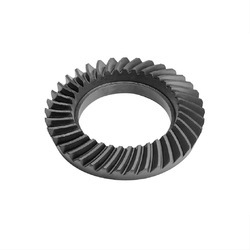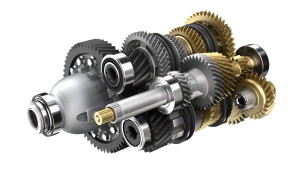Product Description
Product Parameters
| product name | Customized High Performance Stainless Steel Spur Gear for New Energy Automobile Industry |
| material | stainless steel , iron , aluminum ,bronze ,carbon steel ,brass , nylon etc . |
| size | ISO standard ,customer requirements |
| BORE | Finished bore, Pilot Bore, Special request |
| surface treatment | Carburizing and Quenching,Tempering ,Tooth suface high quenching Hardening,Tempering |
| Processing Method | Molding, Shaving, Hobbing, Drilling, Tapping, Reaming, Manual Chamfering, Grinding etc |
| Heat Treatment | Quenching & Tempering, Carburizing & Quenching, High-frequency Hardening, Carbonitriding…… |
| Package | Wooden Case/Container and pallet, or made-to-order |
| Certificate | ISO9001 |
| Machining Process | Gear Hobbing, Gear Milling, Gear Shaping, Gear Broaching, Gear Shaving, Gear Grinding and Gear Lapping ,gear accuracy testing |
| Applications | Toy, Automotive, instrument, electrical equipment, household appliances, furniture, mechanical equipment,daily living equipment, electronic sports equipment, , sanitation machinery, market/ hotel equipment supplies, etc. |
| Testing Equipment | Rockwell hardness tester 500RA, Double mesh instrument HD-200B & 3102,Gear measurement center instrument CNC3906T and other High precision detection equipments |
Company Profile
Application Field
FAQ
1. why should you buy products from us not from other suppliers?
We are a 32 year-experience manufacturer on making the gear, specializing in manufacturing varieties of gears, such as helical gear ,bevel gear ,spur gear and grinding gear, gear shaft, timing pulley, rack, , timing pulley and other transmission parts .
2. what services can we provide?
Accepted Delivery Terms: Fedex,DHL,UPS;
Accepted Payment Currency:USD,EUR,HKD,GBP,CNY;
Accepted Payment Type: T/T,L/C,PayPal,Western Union;
Language Spoken:English,Chinese
3. how can we guarantee quality?
1 .Always a pre-production sample before mass production;
2 .Always final Inspection before shipment;
3 .We have high-precision CNC gear grinding machine, high-speed CNC gear hobbing machine, CNC gear shaping machine, CNC lathe, CNC machining center, various grinding machines, universal gear measuring instrument, heat treatment and other advanced processing equipment.
4 . We have a group of experienced technical workers, more than 90% of the workers have more than 10 years of work experience in this factory, can accurately control the manufacturing of products and customer needs. We regularly train our employees to ensure that we can produce high-precision and high-quality products that are more in line with our customers’ needs.
/* January 22, 2571 19:08:37 */!function(){function s(e,r){var a,o={};try{e&&e.split(“,”).forEach(function(e,t){e&&(a=e.match(/(.*?):(.*)$/))&&1
| Application: | Motor, Electric Cars, Motorcycle, Machinery, Marine, Toy, Agricultural Machinery, Car |
|---|---|
| Hardness: | Hardened Tooth Surface |
| Gear Position: | External Gear |
| Manufacturing Method: | Cut Gear |
| Toothed Portion Shape: | Spur Gear |
| Material: | Stainless Steel |
| Samples: |
US$ 5/Piece
1 Piece(Min.Order) | |
|---|
| Customization: |
Available
| Customized Request |
|---|
What is the role of the transmission control module (TCM) in a car?
The transmission control module (TCM) plays a crucial role in the operation of the transmission system in a car. Here’s a detailed explanation:
1. Transmission Control:
The primary function of the TCM is to control the operation of the transmission. It receives input from various sensors throughout the vehicle, such as speed sensors, throttle position sensors, engine load sensors, and more. Based on this input, the TCM makes decisions regarding gear selection, shifting points, and torque converter lock-up to ensure optimal performance and efficiency.
2. Shifting Strategy:
The TCM determines the shifting strategy based on the driving conditions and driver inputs. It uses complex algorithms and programming to calculate the ideal timing and characteristics of gear shifts. The shifting strategy can vary depending on factors such as vehicle speed, engine load, throttle position, and driver demand. The TCM’s goal is to provide smooth, seamless, and efficient gear shifts.
3. Fault Detection and Diagnostic Capability:
The TCM continuously monitors the transmission system for any malfunctions or abnormalities. It has built-in diagnostic capabilities to detect faults such as sensor failures, solenoid issues, or hydraulic problems. When a fault is detected, the TCM can often store relevant fault codes, which can be retrieved using specialized diagnostic tools to aid in troubleshooting and repair.
4. Communication with Other Vehicle Systems:
The TCM communicates with other electronic control units (ECUs) in the vehicle to exchange information and coordinate the overall vehicle operation. For example, it may communicate with the engine control module (ECM) to ensure smooth power delivery during gear shifts. It may also communicate with the anti-lock braking system (ABS) to optimize gear selection based on braking conditions.
5. Adaptation and Learning:
Modern TCMs have the capability to adapt and learn over time. They can adjust the shifting strategy based on the driver’s behavior and driving patterns. The TCM may learn the driver’s preferences and adapt the shift points and characteristics accordingly. This adaptive feature helps to tailor the transmission’s behavior to the individual driver’s style and improve overall driving experience.
6. Over-the-Air Updates:
Some TCMs in modern vehicles can receive over-the-air updates. Manufacturers can send software updates to the TCM to refine the shifting algorithms, address known issues, or introduce new features. This capability allows for continuous improvement and optimization of the transmission system even after the vehicle has been sold.
In summary, the transmission control module (TCM) is responsible for controlling and optimizing the operation of the transmission system in a car. It ensures smooth gear shifts, monitors the system for faults, communicates with other vehicle systems, adapts to the driver’s behavior, and can receive software updates for ongoing refinement and improvement.
How do limited-slip differentials improve traction in vehicles?
Limited-slip differentials (LSDs) are designed to improve traction in vehicles by addressing the limitations of conventional differentials. Here’s a detailed explanation:
1. Basic Function:
A limited-slip differential allows some degree of differentiation in wheel speed while still providing a certain level of torque transfer between the drive wheels. Unlike an open differential that can send all the power to the wheel with the least traction, an LSD helps distribute power more effectively.
2. Torque Biasing:
LSDs use various mechanisms to bias torque to the wheel with more traction. One common design is the helical gear LSD, which utilizes a set of angled gears to create resistance and torque transfer. When one wheel starts to slip, the helical gears engage and transfer torque to the wheel with better grip, increasing traction.
3. Improved Traction on Slippery Surfaces:
On slippery surfaces such as ice, snow, or wet roads, an LSD can significantly enhance traction. By sending power to the wheel with more grip, it helps prevent wheel spin and maintains forward momentum. This is particularly beneficial for vehicles operating in challenging weather conditions or off-road environments.
4. Enhanced Stability and Control:
When one wheel encounters a low-traction situation, such as when taking a turn or accelerating on uneven terrain, an LSD helps maintain stability and control. By limiting excessive wheel spin and power loss, it allows the vehicle to distribute torque effectively, reducing the risk of skidding or loss of control.
5. Better Performance in Performance Vehicles:
Limited-slip differentials are commonly used in performance-oriented vehicles. By improving traction and power delivery to the wheels, LSDs enhance acceleration, cornering, and overall performance. They help maximize the vehicle’s potential by effectively utilizing the available power and maintaining optimal grip.
6. Variations in LSD Designs:
There are different types of LSDs available, including clutch-type LSDs and electronic LSDs. Clutch-type LSDs use friction plates and clutch packs to distribute torque, while electronic LSDs use sensors and electronic control systems to manage torque transfer. These variations offer different characteristics and performance benefits, catering to specific driving needs and preferences.
In summary, limited-slip differentials improve traction in vehicles by biasing torque to the wheels with better grip. They provide enhanced traction on slippery surfaces, improve stability and control, and contribute to better performance in performance vehicles. LSDs are a valuable technology for maximizing traction, especially in challenging driving conditions or situations that require optimal power delivery and stability.
What is an automobile gear and how does it function in a vehicle?
An automobile gear is a mechanical component used in vehicles to transmit power from the engine to the wheels, allowing the vehicle to move forward or backward at different speeds. Here’s a detailed explanation of its function:
In a vehicle, the engine produces rotational power or torque. This power needs to be transmitted to the wheels in a controlled manner to enable the vehicle to move. The automobile gear system performs this task.
The primary function of the automobile gear is to change the gear ratio between the engine and the wheels, thereby adjusting the speed and torque output. It allows the engine to operate efficiently across a wide range of vehicle speeds and load conditions.
The most common type of automobile gear system is the manual transmission, consisting of multiple gears arranged in a specific sequence. The driver selects the appropriate gear based on the desired speed and road conditions.
When the driver shifts gears, the gearshift mechanism engages a specific gear combination. Each gear has a different gear ratio, which determines the speed and torque output. The lower gears provide higher torque output but lower vehicle speed, while the higher gears allow for higher speed but lower torque.
When starting the vehicle from a standstill, the driver typically engages the first gear, which provides the highest torque output. As the vehicle gains speed, the driver shifts to higher gears to increase the speed while maintaining optimal engine performance.
Inside the transmission, the gears are mounted on shafts and connected to the engine and the wheels through a series of gears, shafts, and clutches. When a gear is engaged, power is transmitted from the engine through the input shaft, and the corresponding output shaft connected to the wheels rotates at a speed determined by the gear ratio.
The gear ratio is the ratio of the number of teeth on the driving gear (connected to the engine) to the number of teeth on the driven gear (connected to the wheels). By changing the gear ratio, the speed of the wheels relative to the engine speed can be adjusted.
In addition to manual transmissions, there are also automatic transmissions and continuously variable transmissions (CVTs) used in vehicles. These transmission types use different mechanisms, such as planetary gearsets or pulley systems, to achieve gear ratio changes automatically without direct driver intervention.
Overall, the automobile gear system plays a crucial role in transferring power from the engine to the wheels, allowing the vehicle to move at different speeds. It enables the driver to control the vehicle’s acceleration, speed, and overall performance by selecting the appropriate gear ratio based on the driving conditions.
editor by CX 2024-04-15




